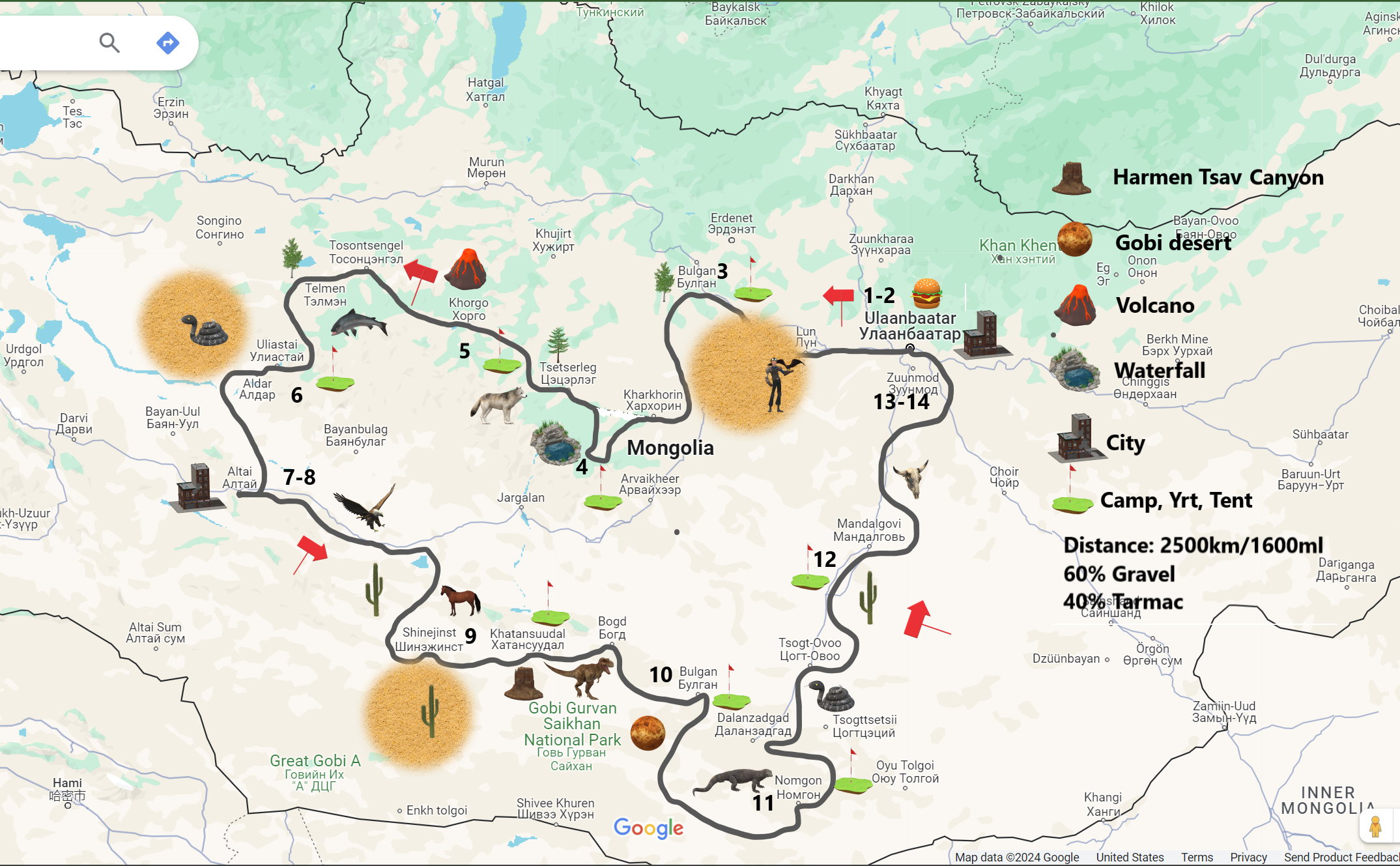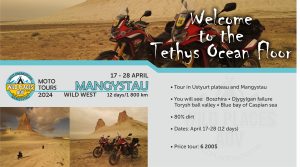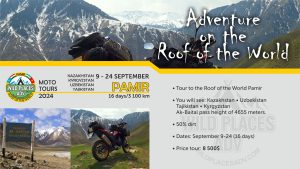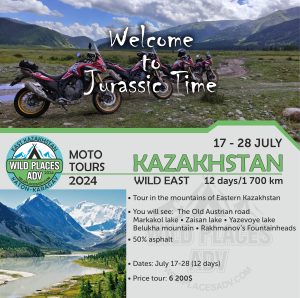Motorcycle tours Mongolia GRAND TOUR
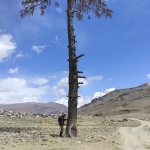
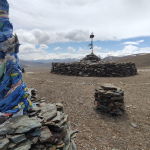
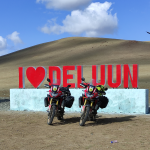
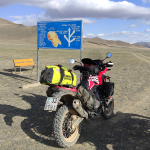
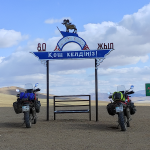
Overview
Motorcycle tours Mongolia GRAND TOUR
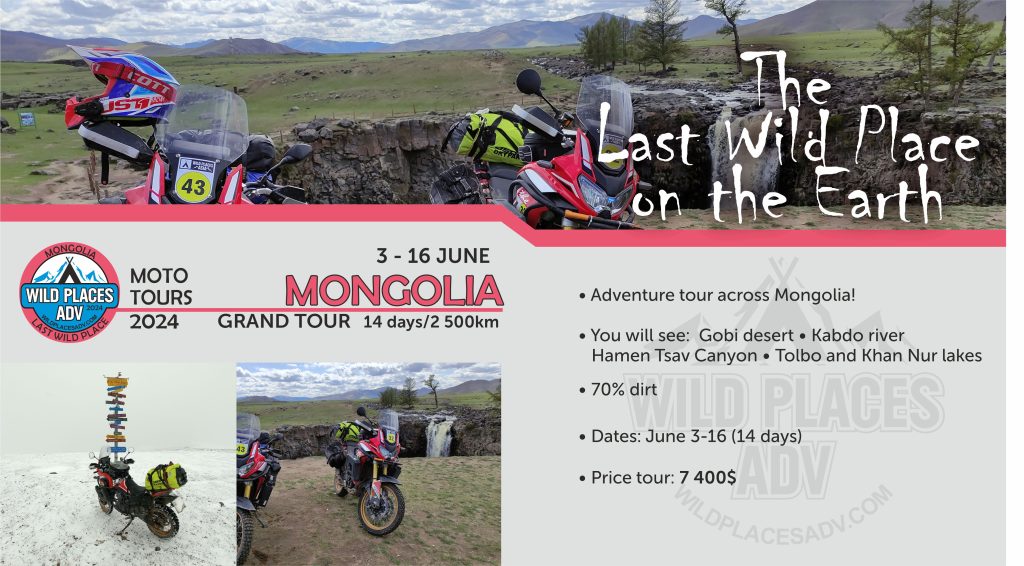
Item Code: The Last Wild Place on the Earth
Adventure tour across Mongolia!
You will see: (Gobi Desert, Tolbo and Khar Nur Lakes, Kabdo River, Hamen Tsav Canyon).
70% dirt. The difficulty level is Hard/Extra Hard.
Dates:
Tour (14 days) June 3-16, 2024.
Tour price: $7400
WRITE TO US ON WHATSAPP
Conquering the Vast Landscapes: Motorcycle Tours in Mongolia
Mongolia, a country where the spirit of freedom permeates every corner, and where nature unfolds into vast expanses of steppes, mountain ranges, and deserts, offers unique opportunities for motorcycle journeys. Motorcycle tours in Mongolia are becoming increasingly popular among those seeking adventure, authentic experiences, and incredible landscapes. In this article, we will explore why Mongolia is an ideal destination for motorcycle adventures and what makes it so attractive to two-wheeled travelers.
1. Wild and Untouched Routes
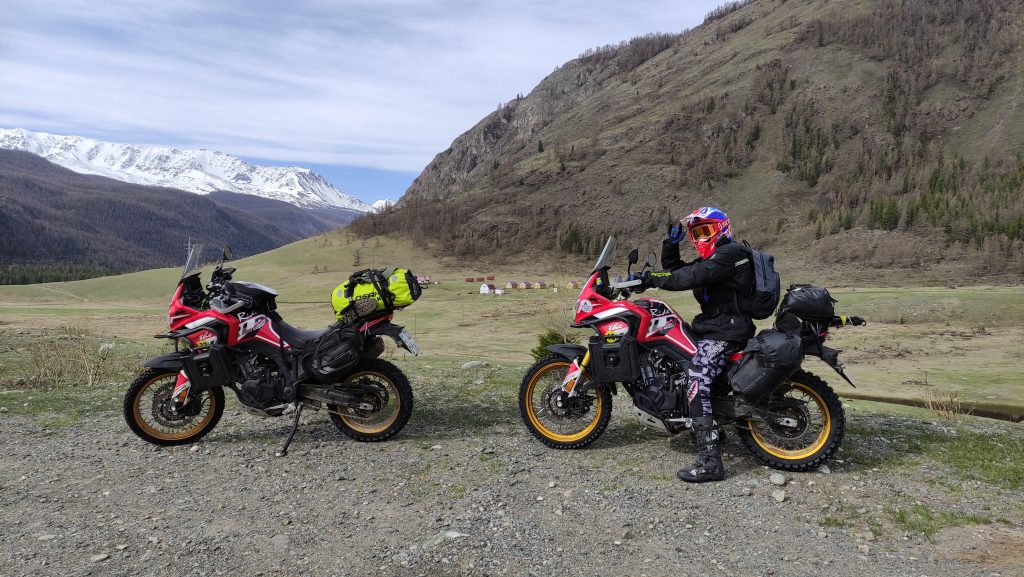
Mongolia, with its vast expanses and incredible rich nature, offers numerous routes for motorcycle tours that will take you to the most remote and wild corners of the country. From the endless steppes of Hustai and the Altai Mountains to the enigmatic Gobi Desert, every corner of Mongolia offers a unique and exhilarating experience for motorcyclists. Many of these routes pass through places that are inaccessible by other means, making them even more attractive for exploration.
2. Cultural Immersion
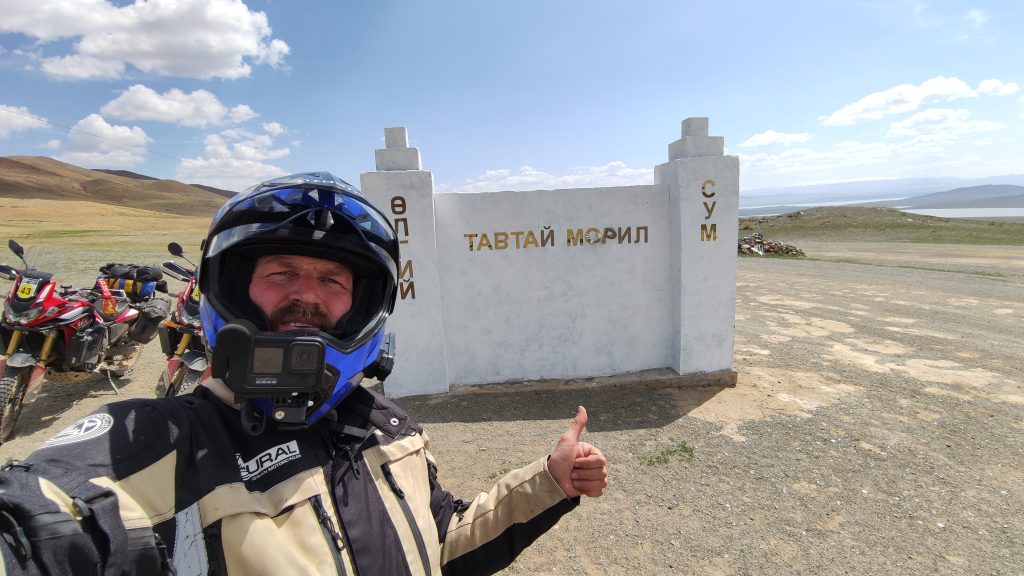
Traveling by motorcycle through Mongolia also provides a unique opportunity to immerse yourself in the local culture and customs. Meetings with nomads, visits to traditional markets, overnight stays in yurts – all are components of an unforgettable experience that can only be obtained on a motorcycle. Many tours include visits to historical and cultural landmarks, such as ancient monasteries, historic sites, and places associated with the rich history of the Mongol Empire.
3. Spirit of Adventure
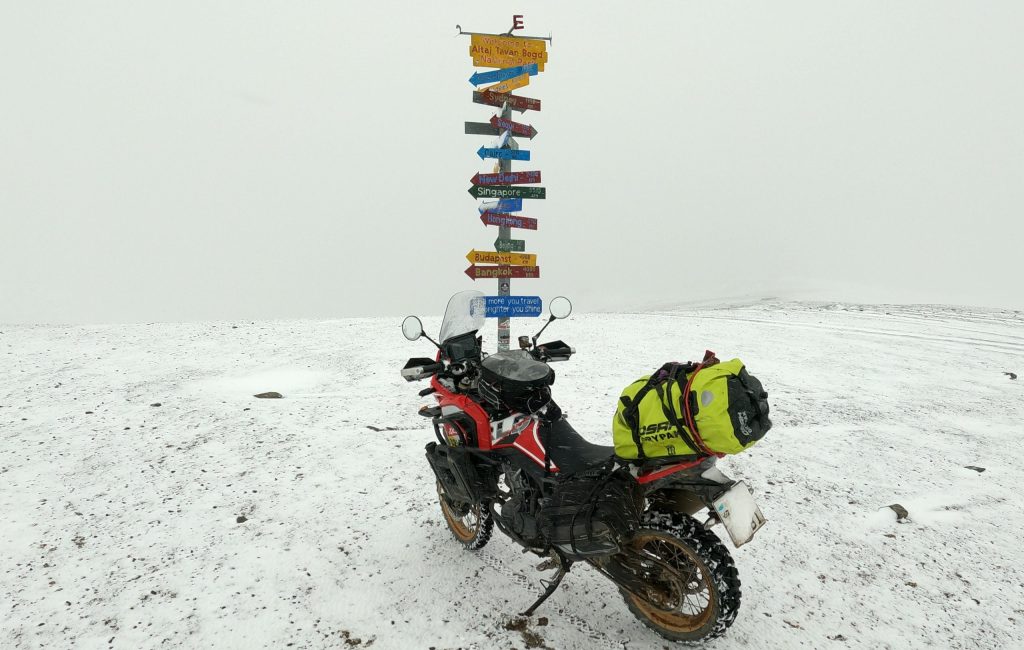
Motorcycling in Mongolia is not just about nature and culture but also about the spirit of adventure. It is a country where roads can be a challenge, and the weather can be unpredictable, making each day exciting and unpredictable. Overcoming obstacles, interacting with local residents, and enjoying magnificent landscapes create an atmosphere of adventure and adrenaline that is hard to find elsewhere.
4. Environmental Consciousness
Motorcycle travel can also be more environmentally friendly than using cars or other means of transportation. Motorcycles consume less fuel and have a smaller impact on the environment, making them an attractive option for travel in vulnerable ecosystems such as the deserts and steppes of Mongolia.
Conclusion
Motorcycle tours in Mongolia offer an unforgettable experience, combining adventure, cultural immersion, and captivating landscapes. They are suitable for both experienced motorcyclists and those who are just beginning their journey into the world of moto-adventures. Be prepared to encounter the wild and beautiful nature, explore ancient cultures, and create unforgettable memories on the roads of Mongolia.
Included/Excluded
Tour Plan
Day 1





At the entrance to the border of the Russian Federation, we will purchase SIM cards, Internet. The city of Tsagaannuur. We are going to spend the night at Tolbo Nuur Lake (170 km). On the second day, an alternative route to the Potanin Glacier is possible (1-day round trip) + 250 km. Let’s look at the weather.
Details
Day 1
At the entrance to the border of the Russian Federation, we will purchase SIM cards, Internet. The city of Tsagaannuur. We are going to spend the night at Tolbo Nuur Lake (170 km). On the second day, an alternative route to the Potanin Glacier is possible (1-day round trip) + 250 km. Let’s look at the weather.
Day 2
From Tolbo Nuur Lake, we move southeast to the next lake on the way, Khar Nuur (260 km). Stops in guest houses, yurts, fishing.
Day 3
From Lake Khar-Nuur we head to the city of Altai (374 km). Food purchase, rest, we stock up on fuel.
Day 4
From the city of Altai we head to the village of Shinezhinst (350 km).
Day 5
From Shinezhinst – to the beautiful Hermen Tsav Canyon (150 km), the road is difficult, rugged terrain, directions. The Gobi Desert.
Day 6
Hermen-Tsav – Gurvantes (120 km). It is also a difficult section, but perhaps we will pass it quickly and get to Bogd, then + 1 day savings on rest where you like.
Day 7
Gurvantes – Bogd (200 km). We are already climbing higher to the north, but we are still moving through the Gobi Desert.
Day 8
Bogd – Guchin Us (100 km) – Arvayheer (100 km) – Kharkhorin (150 km). The road is divided into three segments, depending on the fatigue of the participants and the complexity of the road, we can stop at any of the points. One of the options is 40 km west of the route, the most famous waterfall of Mongolia is located, it is located on the right inflow of the Orkhon. After viewing, we move to Kharkhorin, there is purchase, fuel supplies, rest.
Day 9
Kharkhorin – Tsagaan-Nuur (300 km) easy road on asphalt, arrival before lunch, visit to the extinct volcano Khorgo – rest on the lake, fishing.
Day 10
Tsagaan-Nuur – Telman-Nuur (300 km). It is also not a difficult section on paved roads, but with the opportunity to drive into the mountains and foothills to beautiful locations.
Day 11
Telmen-Nuur – Ulangom (433 km). There is also an asphalt run to the west of the country to the city of Ulaangom. It is possible to stop in a yurt by the lake.
Day 12
Ulaangom – Border (242 km). As you understand, the route is scheduled for 12 days, and in the plan 14 days. This means that we have two days to rest in any place we like, as we get tired and for unforeseen situations.
Map
Questions & Answers
Do you speak spanish?
Lorem ipsum dolor sit amet, utinam munere antiopam vel ad. Qui eros iusto te. Nec ad feugiat honestatis. Quo illum detraxit an. Ius eius quodsi molestiae at, nostrum definitiones his cu. Discere referrentur mea id, an pri novum possim deterruisset. Eum oratio reprehendunt cu. Nec te quem assum postea.
Question 2?
Lorem ipsum dolor sit amet, utinam munere antiopam vel ad. Qui eros iusto te. Nec ad feugiat honestatis. Quo illum detraxit an. Ius eius quodsi molestiae at, nostrum definitiones his cu. Discere referrentur mea id, an pri novum possim deterruisset. Eum oratio reprehendunt cu. Nec te quem assum postea.
Day 2
From Tolbo Nuur Lake, we move southeast to the next lake on the way, Khar Nuur (260 km). Stops in guest houses, yurts, fishing.
Day 3
From Lake Khar-Nuur we head to the city of Altai (374 km). Food purchase, rest, we stock up on fuel.
Day 4
From the city of Altai we head to the village of Shinezhinst (350 km).
Day 5
From Shinezhinst – to the beautiful Hermen Tsav Canyon (150 km), the road is difficult, rugged terrain, directions. The Gobi Desert.
Day 6
Hermen-Tsav – Gurvantes (120 km). It is also a difficult section, but perhaps we will pass it quickly and get to Bogd, then + 1 day savings on rest where you like.
Day 7
Gurvantes – Bogd (200 km). We are already climbing higher to the north, but we are still moving through the Gobi Desert.
Day 8
Bogd – Guchin Us (100 km) – Arvayheer (100 km) – Kharkhorin (150 km). The road is divided into three segments, depending on the fatigue of the participants and the complexity of the road, we can stop at any of the points. One of the options is 40 km west of the route, the most famous waterfall of Mongolia is located, it is located on the right inflow of the Orkhon. After viewing, we move to Kharkhorin, there is purchase, fuel supplies, rest.
Day 9
Kharkhorin – Tsagaan-Nuur (300 km) easy road on asphalt, arrival before lunch, visit to the extinct volcano Khorgo – rest on the lake, fishing.
Day 10
Tsagaan-Nuur – Telman-Nuur (300 km). It is also not a difficult section on paved roads, but with the opportunity to drive into the mountains and foothills to beautiful locations.
Day 11
Telmen-Nuur – Ulangom (433 km). There is also an asphalt run to the west of the country to the city of Ulaangom. It is possible to stop in a yurt by the lake.
Day 12
Ulaangom – Border (242 km). As you understand, the route is scheduled for 12 days, and in the plan 14 days. This means that we have two days to rest in any place we like, as we get tired and for unforeseen situations.


